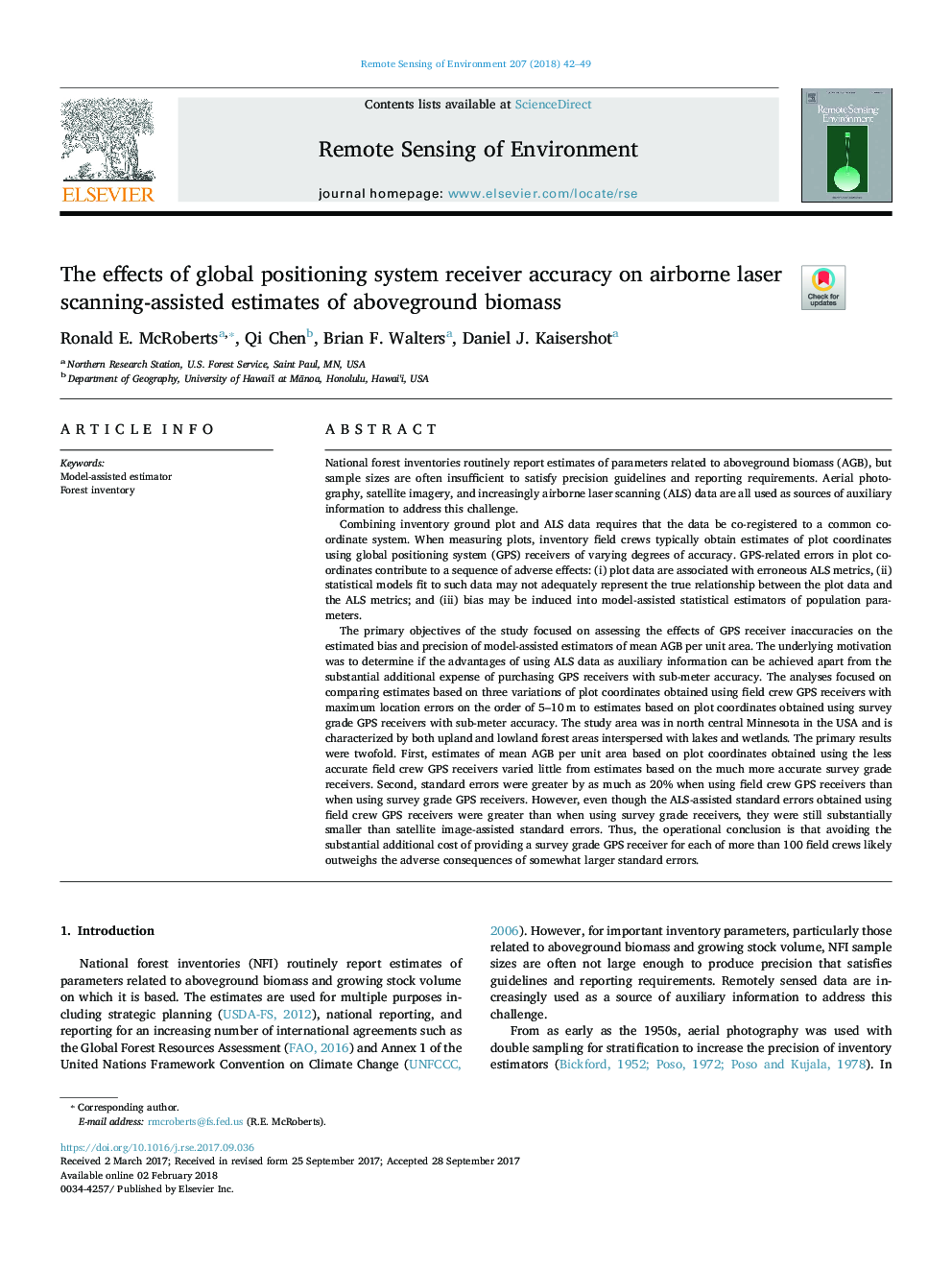| Article ID | Journal | Published Year | Pages | File Type |
|---|---|---|---|---|
| 8866706 | Remote Sensing of Environment | 2018 | 8 Pages |
Abstract
The primary objectives of the study focused on assessing the effects of GPS receiver inaccuracies on the estimated bias and precision of model-assisted estimators of mean AGB per unit area. The underlying motivation was to determine if the advantages of using ALS data as auxiliary information can be achieved apart from the substantial additional expense of purchasing GPS receivers with sub-meter accuracy. The analyses focused on comparing estimates based on three variations of plot coordinates obtained using field crew GPS receivers with maximum location errors on the order of 5-10Â m to estimates based on plot coordinates obtained using survey grade GPS receivers with sub-meter accuracy. The study area was in north central Minnesota in the USA and is characterized by both upland and lowland forest areas interspersed with lakes and wetlands. The primary results were twofold. First, estimates of mean AGB per unit area based on plot coordinates obtained using the less accurate field crew GPS receivers varied little from estimates based on the much more accurate survey grade receivers. Second, standard errors were greater by as much as 20% when using field crew GPS receivers than when using survey grade GPS receivers. However, even though the ALS-assisted standard errors obtained using field crew GPS receivers were greater than when using survey grade receivers, they were still substantially smaller than satellite image-assisted standard errors. Thus, the operational conclusion is that avoiding the substantial additional cost of providing a survey grade GPS receiver for each of more than 100 field crews likely outweighs the adverse consequences of somewhat larger standard errors.
Related Topics
Physical Sciences and Engineering
Earth and Planetary Sciences
Computers in Earth Sciences
Authors
Ronald E. McRoberts, Qi Chen, Brian F. Walters, Daniel J. Kaisershot,
